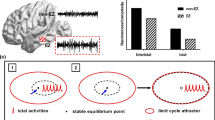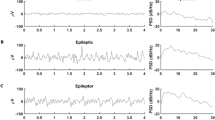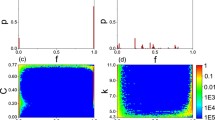Abstract
Epilepsy is a disorder of the brain characterized by the predisposition to generate recurrent unprovoked seizures, which involves reshaping of neuronal circuitries based on intense neuronal activity. In this review, we first detailed the regulation of plasticity-associated genes, such as ARC, GAP-43, PSD-95, synapsin, and synaptophysin. Indeed, reshaping of neuronal connectivity after the primary, acute epileptogenesis event increases the excitability of the temporal lobe. Herein, we also discussed the heterogeneity of neuronal populations regarding the number of synaptic connections, which in the theoretical field is commonly referred as degree. Employing integrate-and-fire neuronal model, we determined that in addition to increased synaptic strength, degree correlations might play essential and unsuspected roles in the control of network activity. Indeed, assortativity, which can be described as a condition where high-degree correlations are observed, increases the excitability of neural networks. In this review, we summarized recent topics in the field, and data were discussed according to newly developed or unusual tools, as provided by mathematical graph analysis and high-order statistics. With this, we were able to present new foundations for the pathological activity observed in temporal lobe epilepsy.




Similar content being viewed by others
References
Buckmaster PS (2014) Does mossy fiber sprouting give rise to the epileptic state? In: Scharfman HE, Buckmaster PS (eds) issues in Clinical Epileptology: A view from the bench. Adv Exp Med Biol 813. Springer Netherlands:161–168. doi:10.1007/978-94-017-8914-1_13
O’Dell CM, Das A, Gt W, Ray SK, Banik NL (2012) Understanding the basic mechanisms underlying seizures in mesial temporal lobe epilepsy and possible therapeutic targets: a review. J Neurosci Res 90(5):913–924. doi:10.1002/jnr.22829
Dixit AB, Banerjee J, Srivastava A, Tripathi M, Sarkar C, Kakkar A, Jain M, Chandra PS (2016) RNA-seq analysis of hippocampal tissues reveals novel candidate genes for drug refractory epilepsy in patients with MTLE-HS. Genomics 107(5):178–188. doi:10.1016/j.ygeno.2016.04.001
Vieira AS, de Matos AH, do Canto AM, Rocha CS, Carvalho BS, Pascoal VD, Norwood B, Bauer S et al (2016) RNA sequencing reveals region-specific molecular mechanisms associated with epileptogenesis in a model of classical hippocampal sclerosis. Scientific reports 6:22416. doi:10.1038/srep22416
Hunt RF, Boychuk JA, Smith BN (2013) Neural circuit mechanisms of post-traumatic epilepsy. Front Cell Neurosci 7:89. doi:10.3389/fncel.2013.00089
Buckmaster PS, Lew FH (2011) Rapamycin suppresses mossy fiber sprouting but not seizure frequency in a mouse model of temporal lobe epilepsy. J Neurosci 31(6):2337–2347. doi:10.1523/JNEUROSCI.4852-10.2011
Heng K, Haney MM, Buckmaster PS (2013) High-dose rapamycin blocks mossy fiber sprouting but not seizures in a mouse model of temporal lobe epilepsy. Epilepsia 54(9):1535–1541. doi:10.1111/epi.12246
Wuarin JP, Dudek FE (1996) Electrographic seizures and new recurrent excitatory circuits in the dentate gyrus of hippocampal slices from kainate-treated epileptic rats. J Neurosci 16(14):4438–4448
Lynch M, Sutula T (2000) Recurrent excitatory connectivity in the dentate gyrus of kindled and kainic acid-treated rats. J Neurophysiol 83(2):693–704
Winokur RS, Kubal T, Liu D, Davis SF, Smith BN (2004) Recurrent excitation in the dentate gyrus of a murine model of temporal lobe epilepsy. Epilepsy Res 58(2–3):93–105. doi:10.1016/j.eplepsyres.2004.01.002
Blumcke I, Thom M, Aronica E, Armstrong DD, Bartolomei F, Bernasconi A, Bernasconi N, Bien CG et al (2013) International consensus classification of hippocampal sclerosis in temporal lobe epilepsy: a task force report from the ILAE commission on diagnostic methods. Epilepsia 54(7):1315–1329. doi:10.1111/epi.12220
Schoene-Bake JC, Keller SS, Niehusmann P, Volmering E, Elger C, Deppe M, Weber B (2014) In vivo mapping of hippocampal subfields in mesial temporal lobe epilepsy: relation to histopathology. Hum Brain Mapp 35(9):4718–4728. doi:10.1002/hbm.22506
Buckmaster PS, Dudek FE (1997) Neuron loss, granule cell axon reorganization, and functional changes in the dentate gyrus of epileptic kainate-treated rats. J Comp Neurol 385(3):385–404
Sutula TP (2004) Mechanisms of epilepsy progression: current theories and perspectives from neuroplasticity in adulthood and development. Epilepsy Res 60(2–3):161–171. doi:10.1016/j.eplepsyres.2004.07.001
Tauck DL, Nadler JV (1985) Evidence of functional mossy fiber sprouting in hippocampal formation of kainic acid-treated rats. J Neurosci 5(4):1016–1022
Rao MS, Hattiangady B, Reddy DS, Shetty AK (2006) Hippocampal neurodegeneration, spontaneous seizures, and mossy fiber sprouting in the F344 rat model of temporal lobe epilepsy. J Neurosci Res 83(6):1088–1105. doi:10.1002/jnr.20802
Dingledine R, Varvel NH, Dudek FE (2014) When and how do seizures kill neurons, and is cell death relevant to epileptogenesis? Adv Exp Med Biol 813:109–122. doi:10.1007/978-94-017-8914-1_9
Freund TF, Buzsaki G (1996) Interneurons of the hippocampus. Hippocampus 6(4):347–470. doi:10.1002/(SICI)1098-1063(1996)6:4<347::AID-HIPO1>3.0.CO;2-I
Sperk G, Wieser R, Widmann R, Singer EA (1986) Kainic acid induced seizures: changes in somatostatin, substance P and neurotensin. Neuroscience 17(4):1117–1126
Shetty AK, Turner DA (1995) Intracerebroventricular kainic acid administration in adult rat alters hippocampal calbindin and non-phosphorylated neurofilament expression. J Comp Neurol 363(4):581–599. doi:10.1002/cne.903630406
Shetty AK, Turner DA (2001) Glutamic acid decarboxylase-67-positive hippocampal interneurons undergo a permanent reduction in number following kainic acid-induced degeneration of CA3 pyramidal neurons. Exp Neurol 169(2):276–297. doi:10.1006/exnr.2001.7668
Janz P, Savanthrapadian S, Haussler U, Kilias A, Nestel S, Kretz O, Kirsch M, Bartos M et al (2016) Synaptic remodeling of entorhinal input contributes to an aberrant hippocampal network in temporal lobe epilepsy. Cereb Cortex. doi:10.1093/cercor/bhw093
Kinjo ER, Higa GS, Morya E, Valle AC, Kihara AH, Britto LR (2014) Reciprocal regulation of epileptiform neuronal oscillations and electrical synapses in the rat hippocampus. PLoS One 9(10):e109149. doi:10.1371/journal.pone.0109149
Haussler U, Rinas K, Kilias A, Egert U, Haas CA (2016) Mossy fiber sprouting and pyramidal cell dispersion in the hippocampal CA2 region in a mouse model of temporal lobe epilepsy. Hippocampus 26(5):577–588. doi:10.1002/hipo.22543
Morimoto K, Fahnestock M, Racine RJ (2004) Kindling and status epilepticus models of epilepsy: rewiring the brain. Prog Neurobiol 73(1):1–60. doi:10.1016/j.pneurobio.2004.03.009
Morimoto K, Sato K, Sato S, Yamada N, Hayabara T (1998) Time-dependent changes in rat hippocampal synapsin I mRNA expression during long-term potentiation. Brain Res 783(1):57–62
Suemaru S, Sato K, Morimoto K, Yamada N, Sato T, Kuroda S (2000) Increment of synapsin I immunoreactivity in the hippocampus of the rat kindling model of epilepsy. Neuroreport 11(6):1319–1322
Mitsuya K, Nitta N, Suzuki F (2009) Persistent zinc depletion in the mossy fiber terminals in the intrahippocampal kainate mouse model of mesial temporal lobe epilepsy. Epilepsia 50(8):1979–1990. doi:10.1111/j.1528-1167.2009.02055.x
Li S, Reinprecht I, Fahnestock M, Racine RJ (2002) Activity-dependent changes in synaptophysin immunoreactivity in hippocampus, piriform cortex, and entorhinal cortex of the rat. Neuroscience 115(4):1221–1229
Jiang Q, Wang J, Wu X, Jiang Y (2007) Alterations of NR2B and PSD-95 expression after early-life epileptiform discharges in developing neurons. Int J Dev Neurosci 25(3):165–170. doi:10.1016/j.ijdevneu.2007.02.001
Sun QJ, Duan RS, Wang AH, Shang W, Zhang T, Zhang XQ, Chi ZF (2009) Alterations of NR2B and PSD-95 expression in hippocampus of kainic acid-exposed rats with behavioural deficits. Behav Brain Res 201(2):292–299. doi:10.1016/j.bbr.2009.02.027
Frasca A, Aalbers M, Frigerio F, Fiordaliso F, Salio M, Gobbi M, Cagnotto A, Gardoni F et al (2011) Misplaced NMDA receptors in epileptogenesis contribute to excitotoxicity. Neurobiol Dis 43(2):507–515. doi:10.1016/j.nbd.2011.04.024
Meberg PJ, Gall CM, Routtenberg A (1993) Induction of F1/GAP-43 gene expression in hippocampal granule cells after seizures [corrected]. Brain Res Mol Brain Res 17(3–4):295–299
Bendotti C, Baldessari S, Pende M, Southgate T, Guglielmetti F, Samanin R (1997) Relationship between GAP-43 expression in the dentate gyrus and synaptic reorganization of hippocampal mossy fibres in rats treated with kainic acid. Eur J Neurosci 9(1):93–101
Rekart JL, Routtenberg A (2010) Overexpression of GAP-43 reveals unexpected properties of hippocampal mossy fibers. Hippocampus 20(1):46–57. doi:10.1002/hipo.20668
Lyford GL, Yamagata K, Kaufmann WE, Barnes CA, Sanders LK, Copeland NG, Gilbert DJ, Jenkins NA et al (1995) Arc, a growth factor and activity-regulated gene, encodes a novel cytoskeleton-associated protein that is enriched in neuronal dendrites. Neuron 14(2):433–445
Akiyama K, Ishikawa M, Saito A (2008) mRNA expression of activity-regulated cytoskeleton-associated protein (arc) in the amygdala-kindled rats. Brain Res 1189:236–246. doi:10.1016/j.brainres.2007.10.102
Christensen KV, Leffers H, Watson WP, Sanchez C, Kallunki P, Egebjerg J (2010) Levetiracetam attenuates hippocampal expression of synaptic plasticity-related immediate early and late response genes in amygdala-kindled rats. BMC Neurosci 11:9. doi:10.1186/1471-2202-11-9
Szyndler J, Maciejak P, Wislowska-Stanek A, Lehner M, Plaznik A (2013) Changes in the Egr1 and arc expression in brain structures of pentylenetetrazole-kindled rats. Pharmacological reports : PR 65(2):368–378
Gangarossa G, Di Benedetto M, O’Sullivan GJ, Dunleavy M, Alcacer C, Bonito-Oliva A, Henshall DC, Waddington JL et al (2011) Convulsant doses of a dopamine D1 receptor agonist result in Erk-dependent increases in Zif268 and arc/Arg3.1 expression in mouse dentate gyrus. PLoS One 6(5):e19415. doi:10.1371/journal.pone.0019415
Engel J Jr, Thompson PM, Stern JM, Staba RJ, Bragin A, Mody I (2013) Connectomics and epilepsy. Curr Opin Neurol 26(2):186–194. doi:10.1097/WCO.0b013e32835ee5b8
Bullmore E, Sporns O (2009) Complex brain networks: graph theoretical analysis of structural and functional systems. Nat Rev Neurosci 10(3):186–198. doi:10.1038/nrn2575
De Vico FF, Richiardi J, Chavez M, Achard S (2014) Graph analysis of functional brain networks: practical issues in translational neuroscience. Philos Trans R Soc Lond Ser B Biol Sci 369(1653). doi:10.1098/rstb.2013.0521
Pessoa L (2014) Understanding brain networks and brain organization. Physics of life reviews 11(3):400–435. doi:10.1016/j.plrev.2014.03.005
Stam CJ (2014) Modern network science of neurological disorders. Nat Rev Neurosci 15(10):683–695. doi:10.1038/nrn3801
Bullmore ET, Bassett DS (2011) Brain graphs: graphical models of the human brain connectome. Annu Rev Clin Psychol 7:113–140. doi:10.1146/annurev-clinpsy-040510-143934
Bernhardt BC, Chen Z, He Y, Evans AC, Bernasconi N (2011) Graph-theoretical analysis reveals disrupted small-world organization of cortical thickness correlation networks in temporal lobe epilepsy. Cereb Cortex 21(9):2147–2157. doi:10.1093/cercor/bhq291
van Diessen E, Diederen SJ, Braun KP, Jansen FE, Stam CJ (2013) Functional and structural brain networks in epilepsy: what have we learned? Epilepsia 54(11):1855–1865. doi:10.1111/epi.12350
Kramer MA, Cash SS (2012) Epilepsy as a disorder of cortical network organization. Neuroscientist 18(4):360–372. doi:10.1177/1073858411422754
Bassett DS, Bullmore E, Verchinski BA, Mattay VS, Weinberger DR, Meyer-Lindenberg A (2008) Hierarchical organization of human cortical networks in health and schizophrenia. J Neurosci 28(37):9239–9248. doi:10.1523/JNEUROSCI.1929-08.2008
Bialonski S, Lehnertz K (2013) Assortative mixing in functional brain networks during epileptic seizures. Chaos 23(3):033139. doi:10.1063/1.4821915
Agosta F, Sala S, Valsasina P, Meani A, Canu E, Magnani G, Cappa SF, Scola E et al (2013) Brain network connectivity assessed using graph theory in frontotemporal dementia. Neurology 81(2):134–143. doi:10.1212/WNL.0b013e31829a33f8
Agosta F, Galantucci S, Valsasina P, Canu E, Meani A, Marcone A, Magnani G, Falini A et al (2014) Disrupted brain connectome in semantic variant of primary progressive aphasia. Neurobiol Aging 35(11):2646–2655. doi:10.1016/j.neurobiolaging.2014.05.017
Kramer MA, Eden UT, Lepage KQ, Kolaczyk ED, Bianchi MT, Cash SS (2011) Emergence of persistent networks in long-term intracranial EEG recordings. J Neurosci 31(44):15757–15767. doi:10.1523/JNEUROSCI.2287-11.2011
de Haan W, Pijnenburg YA, Strijers RL, van der Made Y, van der Flier WM, Scheltens P, Stam CJ (2009) Functional neural network analysis in frontotemporal dementia and Alzheimer’s disease using EEG and graph theory. BMC Neurosci 10:101. doi:10.1186/1471-2202-10-101
Kuhnert MT, Elger CE, Lehnertz K (2010) Long-term variability of global statistical properties of epileptic brain networks. Chaos 20(4):043126. doi:10.1063/1.3504998
Chiang S, Haneef Z (2014) Graph theory findings in the pathophysiology of temporal lobe epilepsy. Clin Neurophysiol 125(7):1295–1305. doi:10.1016/j.clinph.2014.04.004
Albert R, Jeong H, Barabasi AL (2000) Error and attack tolerance of complex networks. Nature 406(6794):378–382. doi:10.1038/35019019
Achard S, Bullmore E (2007) Efficiency and cost of economical brain functional networks. PLoS Comput Biol 3(2):e17. doi:10.1371/journal.pcbi.0030017
Netoff TI, Clewley R, Arno S, Keck T, White JA (2004) Epilepsy in small-world networks. J Neurosci 24(37):8075–8083. doi:10.1523/JNEUROSCI.1509-04.2004
Percha B, Dzakpasu R, Zochowski M, Parent J (2005) Transition from local to global phase synchrony in small world neural network and its possible implications for epilepsy. Phys Rev E Stat Nonlinear Soft Matter Phys 72(3 Pt 1):031909. doi:10.1103/PhysRevE.72.031909
Dyhrfjeld-Johnsen J, Santhakumar V, Morgan RJ, Huerta R, Tsimring L, Soltesz I (2007) Topological determinants of epileptogenesis in large-scale structural and functional models of the dentate gyrus derived from experimental data. J Neurophysiol 97(2):1566–1587. doi:10.1152/jn.00950.2006
Horstmann MT, Bialonski S, Noennig N, Mai H, Prusseit J, Wellmer J, Hinrichs H, Lehnertz K (2010) State dependent properties of epileptic brain networks: comparative graph-theoretical analyses of simultaneously recorded EEG and MEG. Clin Neurophysiol 121(2):172–185. doi:10.1016/j.clinph.2009.10.013
van Dellen E, Douw L, Baayen JC, Heimans JJ, Ponten SC, Vandertop WP, Velis DN, Stam CJ et al (2009) Long-term effects of temporal lobe epilepsy on local neural networks: a graph theoretical analysis of corticography recordings. PLoS One 4(11):e8081. doi:10.1371/journal.pone.0008081
Sun DA, Sombati S, DeLorenzo RJ (2001) Glutamate injury-induced epileptogenesis in hippocampal neurons: an in vitro model of stroke-induced “epilepsy”. Stroke 32(10):2344–2350
Vaessen MJ, Jansen JF, Vlooswijk MC, Hofman PA, Majoie HJ, Aldenkamp AP, Backes WH (2012) White matter network abnormalities are associated with cognitive decline in chronic epilepsy. Cereb Cortex 22(9):2139–2147. doi:10.1093/cercor/bhr298
Newman ME (2002) Assortative mixing in networks. Phys Rev Lett 89(20):208701. doi:10.1103/PhysRevLett.89.208701
Foster JG, Foster DV, Grassberger P, Paczuski M (2010) Edge direction and the structure of networks. Proc Natl Acad Sci U S A 107(24):10815–10820. doi:10.1073/pnas.0912671107
Ponten SC, Bartolomei F, Stam CJ (2007) Small-world networks and epilepsy: graph theoretical analysis of intracerebrally recorded mesial temporal lobe seizures. Clinical neurophysiology : official journal of the International Federation of Clinical Neurophysiology 118(4):918–927. doi:10.1016/j.clinph.2006.12.002
Kramer MA, Kolaczyk ED, Kirsch HE (2008) Emergent network topology at seizure onset in humans. Epilepsy Res 79(2–3):173–186. doi:10.1016/j.eplepsyres.2008.02.002
Schindler KA, Bialonski S, Horstmann MT, Elger CE, Lehnertz K (2008) Evolving functional network properties and synchronizability during human epileptic seizures. Chaos 18(3):033119. doi:10.1063/1.2966112
Braun U, Plichta MM, Esslinger C, Sauer C, Haddad L, Grimm O, Mier D, Mohnke S et al (2012) Test-retest reliability of resting-state connectivity network characteristics using fMRI and graph theoretical measures. NeuroImage 59(2):1404–1412. doi:10.1016/j.neuroimage.2011.08.044
Jalili M, Knyazeva MG (2011) Constructing brain functional networks from EEG: partial and unpartial correlations. J Integr Neurosci 10(2):213–232. doi:10.1142/S0219635211002725
Geier C, Lehnertz K, Bialonski S (2015) Time-dependent degree-degree correlations in epileptic brain networks: from assortative to dissortative mixing. Front Hum Neurosci 9:462. doi:10.3389/fnhum.2015.00462
Newman ME (2003) Mixing patterns in networks. Phys Rev E Stat Nonlinear Soft Matter Phys 67(2 Pt 2):026126. doi:10.1103/PhysRevE.67.026126
Motter AE, Zhou C, Kurths J (2005) Network synchronization, diffusion, and the paradox of heterogeneity. Phys Rev E Stat Nonlinear Soft Matter Phys 71(1 Pt 2):016116. doi:10.1103/PhysRevE.71.016116
Kinjo ER, Higa GS, Santos BA, de Sousa E, Damico MV, Walter LT, Morya E, Valle AC et al (2016) Pilocarpine-induced seizures trigger differential regulation of microRNA-stability related genes in rat hippocampal neurons. Scientific reports 6:20969. doi:10.1038/srep20969
de Lanerolle NC, Kim JH, Robbins RJ, Spencer DD (1989) Hippocampal interneuron loss and plasticity in human temporal lobe epilepsy. Brain Res 495(2):387–395
Babb TL, Kupfer WR, Pretorius JK, Crandall PH, Levesque MF (1991) Synaptic reorganization by mossy fibers in human epileptic fascia dentata. Neuroscience 42(2):351–363
Wuarin JP, Dudek FE (2001) Excitatory synaptic input to granule cells increases with time after kainate treatment. J Neurophysiol 85(3):1067–1077
Cavazos JE, Zhang P, Qazi R, Sutula TP (2003) Ultrastructural features of sprouted mossy fiber synapses in kindled and kainic acid-treated rats. J Comp Neurol 458(3):272–292. doi:10.1002/cne.10581
Simmons ML, Terman GW, Chavkin C (1997) Spontaneous excitatory currents and kappa-opioid receptor inhibition in dentate gyrus are increased in the rat pilocarpine model of temporal lobe epilepsy. J Neurophysiol 78(4):1860–1868
Okazaki MM, Molnar P, Nadler JV (1999) Recurrent mossy fiber pathway in rat dentate gyrus: synaptic currents evoked in presence and absence of seizure-induced growth. J Neurophysiol 81(4):1645–1660
Meconi A, Lui E, Marrone DF (2015) Sustained arc expression in adult-generated granule cells. Neurosci Lett 603:66–70. doi:10.1016/j.neulet.2015.07.029
Perez Y, Morin F, Beaulieu C, Lacaille JC (1996) Axonal sprouting of CA1 pyramidal cells in hyperexcitable hippocampal slices of kainate-treated rats. Eur J Neurosci 8(4):736–748
Lehmann TN, Gabriel S, Kovacs R, Eilers A, Kivi A, Schulze K, Lanksch WR, Meencke HJ et al (2000) Alterations of neuronal connectivity in area CA1 of hippocampal slices from temporal lobe epilepsy patients and from pilocarpine-treated epileptic rats. Epilepsia 41(Suppl 6):S190–S194
McKinney RA, Debanne D, Gahwiler BH, Thompson SM (1997) Lesion-induced axonal sprouting and hyperexcitability in the hippocampus in vitro: implications for the genesis of posttraumatic epilepsy. Nat Med 3(9):990–996
Le Duigou C, Simonnet J, Telenczuk MT, Fricker D, Miles R (2014) Recurrent synapses and circuits in the CA3 region of the hippocampus: an associative network. Front Cell Neurosci 7:262. doi:10.3389/fncel.2013.00262
Case M, Soltesz I (2011) Computational modeling of epilepsy. Epilepsia 52(Suppl 8):12–15. doi:10.1111/j.1528-1167.2011.03225.x
Schmeltzer C, Kihara AH, Sokolov IM, Rudiger S (2015) Degree correlations optimize neuronal network sensitivity to sub-threshold stimuli. PLoS One 10(6):e0121794. doi:10.1371/journal.pone.0121794
Hall D, Kuhlmann L (2013) Mechanisms of seizure propagation in 2-dimensional centre-surround recurrent networks. PLoS One 8(8):e71369. doi:10.1371/journal.pone.0071369
Ursino M, La Cara GE (2006) Travelling waves and EEG patterns during epileptic seizure: analysis with an integrate-and-fire neural network. J Theor Biol 242(1):171–187. doi:10.1016/j.jtbi.2006.02.012
Sporns O, Honey CJ, Kotter R (2007) Identification and classification of hubs in brain networks. PLoS One 2(10):e1049. doi:10.1371/journal.pone.0001049
Tomov P, Pena RF, Roque AC, Zaks MA (2016) Mechanisms of self-sustained oscillatory states in hierarchical modular networks with mixtures of electrophysiological cell types. Front Comput Neurosci 10:23. doi:10.3389/fncom.2016.00023
Jiang X, Lachance M, Rossignol E (2016) Involvement of cortical fast-spiking parvalbumin-positive basket cells in epilepsy. Prog Brain Res 226:81–126. doi:10.1016/bs.pbr.2016.04.012
Acknowledgements
AHK is grateful for grants from Fundação de Amparo à Pesquisa do Estado de São Paulo (FAPESP 2014/16711-6, 2011/50151-0, 2015/50122-0) and Conselho Nacional de Desenvolvimento Científico e Tecnológico (CNPq 308608/2014-3), Brazil. SR acknowledges support from the DFG-IRTG 1740/2.
Author information
Authors and Affiliations
Corresponding author
Rights and permissions
About this article
Cite this article
Kinjo, E.R., Rodríguez, P.X.R., dos Santos, B.A. et al. New Insights on Temporal Lobe Epilepsy Based on Plasticity-Related Network Changes and High-Order Statistics. Mol Neurobiol 55, 3990–3998 (2018). https://doi.org/10.1007/s12035-017-0623-2
Received:
Accepted:
Published:
Issue Date:
DOI: https://doi.org/10.1007/s12035-017-0623-2




